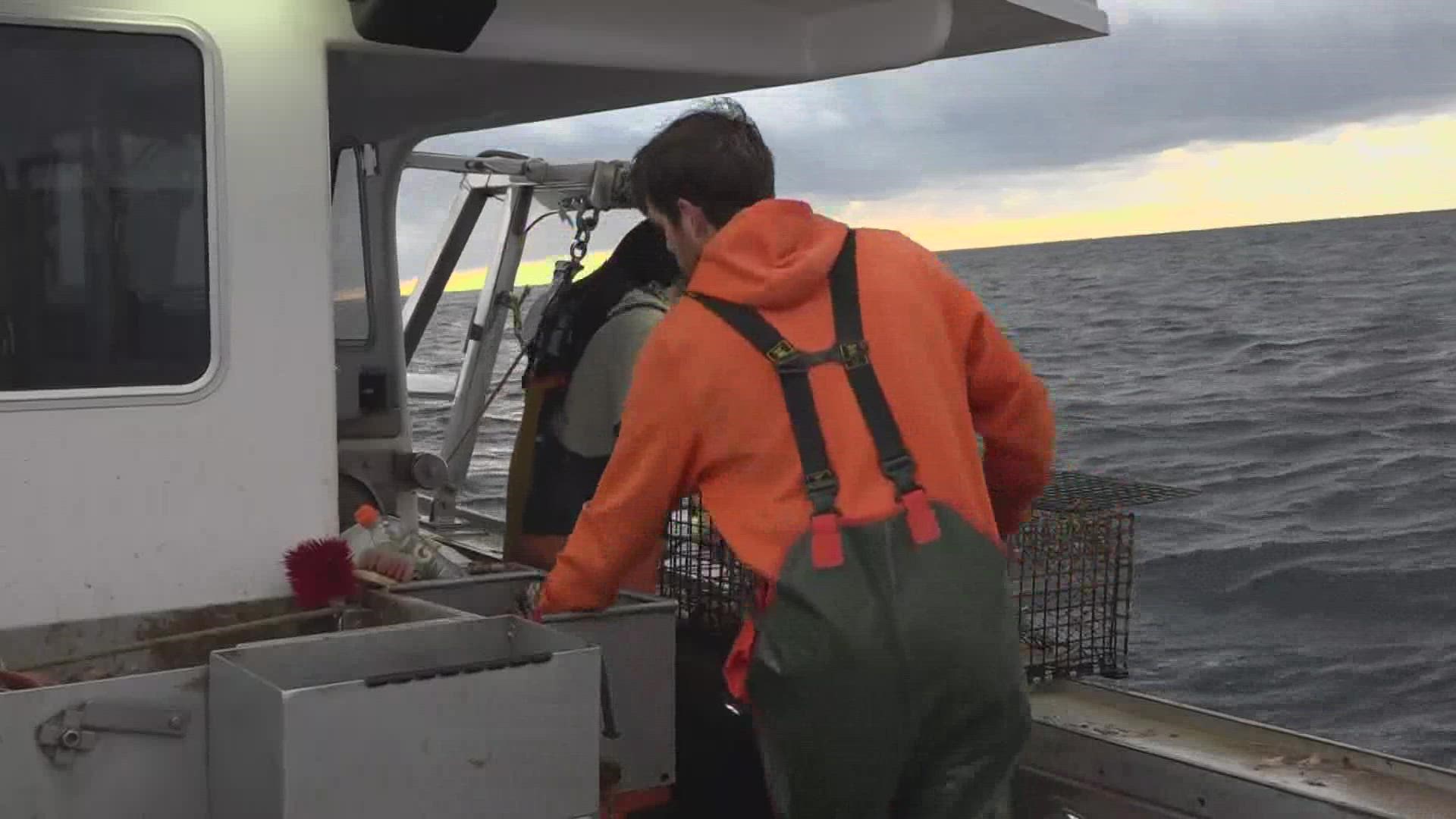WASHINGTON, D.C., USA — Editor's note: The above video aired on Dec. 9.
Maine lobstermen have a new ally in the fight against federal fishing regulations.
A judge granted a motion by the Massachusetts Lobstermen’s Association to join a lawsuit brought by the Maine Lobstermen’s Association, which challenges the National Oceanic and Atmospheric Administration's 10-year right whale protection plan. The plan requires lobstermen to make significant changes to prevent whales from getting tangled in their gear.
The group filed the motion in Washington D.C. District Court, looking to join the lawsuit as a third party.
Massachusetts lobstermen said they want to get involved because they believe federal actions like this could directly impact their livelihoods.
A separate lawsuit filed by several Maine fishing unions claims NOAA’s closure of a 1,000-square-mile section of the Gulf of Maine during peak fishing season will damage the lobster industry for little gain. The zone is now closed from Oct. 18 to Jan. 31 each year.
According to data from the Maine Department of Marine Resources, lobstermen statewide hauled most consistently from July to October last year. They brought in a whopping 20 million pounds in October at peak, before numbers steadily fell back down through January.
DMR officials estimate the closure will have a $2 to $4 million impact on fishermen alone.
RELATED: As the legal battle continues, lobstermen fear new federal closure could hurt industry long-term
According to NOAA, fewer than 360 North Atlantic right whales remain on the planet.
NOAA scientists said the biggest threats to the North Atlantic right whales are ship strikes and entanglements.
According to experts, right whales swim into lines connecting the buoy to the lobster traps on the ocean floor. The animal can spin into the traps and sometimes drag the gear for miles.
They say it causes serious injury and even death in many cases.
"Getting gear out of important whale habitat will save whales and help promote the recovery of this incredibly imperiled species," Kristen Monsell, with the Center for Biological Diversity, said.
Most lobstermen opposed to the restrictions question just how many right whales are even off Maine's coast.
NOAA said tracking them isn't easy. However, maps showing sightings by air and water from 2013 to 2017 show many of them off the coast of Massachusetts and New Brunswick, while fewer appear to be directly in the Gulf of Maine, where the closure zone is.
When asked how many entanglements happen because of Maine-based lobster gear, Monsell said it isn't clear.
"We don't know where the vast majority of entanglements occur, and that's for a number of different reasons," she said. "What we do know is these whales are dying. The species is spiraling towards extinction, entanglements are the number one cause, and there are tons and tons of lines in these important habitat areas."
A spokesperson for NOAA declined NEWS CENTER Maine's request for an interview earlier this month, citing ongoing litigation.
However, they released written statements concerning how they determined the closure zone.
"Because we lack information on exactly where interactions occur, we use areas of high co-occurrence of right whales and fishing gear as a way to identify areas of high entanglement potential. We also consider the type of gear in determining the risk of a serious entanglement that would cause mortality or serious injury. The seasonal restricted areas we put in place recently are based on hotspots, areas with high current and historic habitat use by North Atlantic right whales, high fishing gear density, and high configuration threat.
The LMA 1 Restricted Area was based on the Decision Support Tool, including the right whale density model that predicts higher buoy line densities and risk co-occurring with right whale densities and causing higher risk to right whales relative to other regions. The LMA 1 Restricted Area also represents a hotspot within the Northeast lobster and Jonah crab trap/pot fishery, where overlap between gear and whales is particularly high."
An NOAA spokesperson said its office of law enforcement and the U.S. Coast Guard are responsible for enforcing the zone closure. That will be done on and off the water, including using monitoring technology.

